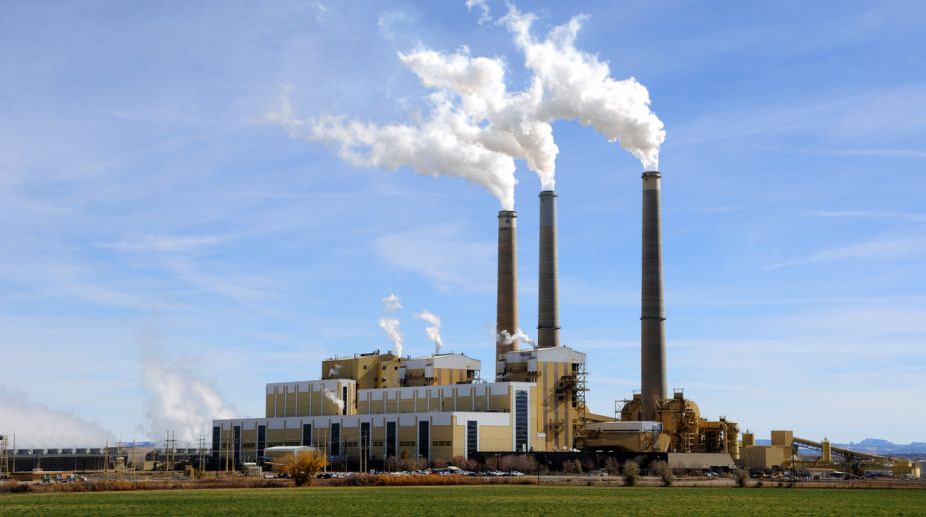Centre approves uniform protection protocol for users of Indian grid
The Central Electricity Authority (CEA) on Saturday said it has approved the uniform protection protocol for users of the Indian grid for implementation on a pan-India basis.

(Getty Images)
As the prospects for coal-generated electricity recede globally, India is one of the last bastions of the world's oldest, dirtiest energy source — although construction of new coal-fired power plants is faltering.
From January 2016 to January 2017, development of coal-fired power capacity fell around the world, according to a March 2017 report titled "Boom and Bust", released jointly by the Sierra Club, Greenpeace and Coalswarm.
Using data from the Global Coal Plant Tracker, an online database developed by Coalswarm that identifies, maps and categorises every known 30-MW and larger coal-fired power generating unit and every new unit proposed since January 1, 2010, the report maps a global move away from coal and towards renewable energy.
Advertisement
In China and India alone, construction activities that would add 68 GW — over a fifth of India's total installed capacity — of additional coal capacity are frozen across 100 project sites, 13 of them in India.
The primary reason for the slowdown in India is "reluctance of banks and other financiers to provide further funds", the report said. Over half (56.5 per cent) of India's installed power capacity will be non-fossil fuel-based — renewables, nuclear and large hydroelectric — within 10 years.
In India, as of February 2017, at least 15 coal-based thermal power projects with an aggregate capacity of 18,420 MW (18.42 GW) were stalled due to financial reasons, the Ministry of Power told the Lok Sabha in February.
However, in March 2017, the Cabinet revived some struggling power projects with a cumulative capacity of some 30 GW under a new Mega Power Policy by providing support of about Rs 10,000 crore to the sector, in addition to incentives such as custom duty waiver for import of capital equipment and tax breaks. This was done to relieve the burden of stressed assets on banks, estimated at Rs 1.5 lakh crore.
"The slowdown in the coal power pipeline brings the possibility of holding global warming to below 2°C from pre-industrial levels within feasible reach," the "Boom and Bust" report stated. However, this hinges on countries such as Vietnam, Indonesia, Turkey and Japan limiting their future coal power development, China and India reinforcing and increasing the slowdown, and developed countries (historically largest emitters) retiring coal-based power plants faster than they have been doing.
India does not plan on expanding its coal-fired capacity during 2017-22, according to the Draft National Electricity Plan proposed in December 2016 by the Central Electricity Authority. It bases this projection on the presumption that non-fossil fuel capacity addition will continue as targeted — 4.3 GW of gas-fired plants, 15 GW of hydroelectric plants, 2.8 GW of nuclear installations and 115 GW of various renewable sources, which would come online during 2017-22.
The plan, however, does take into account 50 GW of coal-based installations that are currently under different stages of construction and are likely to yield benefits during the 2017-22 period, concluding that no coal-based capacity addition is required until at least 2027.
In 2015, India accounted for seven per cent of total global emissions, lower only than China (29 per cent), the US (14 per cent) and the European Union (10 per cent). In the same year, the share of coal-fired power plants in India's total CO2 emissions was just short of half at 47 per cent.
In 2016-17, India's estimated peak demand of 165.2 GW was significantly lower than total installed capacity of over 300 GW. Coal-fired capacity of over 180 GW alone was higher than the peak demand. Despite this, the country continues to face acute power shortages due to coal supply problems, transmission and distribution losses and poor health of power utilities.
According to government figures, estimated electricity consumption between 2005-06 and 2014-15 increased by a compounded annual growth rate of 8.72 per cent, growing to 948,328 gigawatt-hour, even as an estimated 240 million Indians are still without access to electricity.
Already, use of imported coal is costing the country. In 2014-15, coal imports were 212 million tonnes (MT) and cost over Rs 1 lakh crore — up more than five times from 38.5 MT in 2005-06, due largely to poor quality of domestic coal, lack of competition among producers, and insufficient investments.
On the other hand, investing in renewables brings environmental benefits like reduced pollution while creating employment opportunities. Therefore, renewable energy has the potential to solve the energy trilemma of ensuring energy security, energy access and sustainability, according to the NITI Aayog.
To capture the benefits of renewable energy (RE), the NITI Aayog report said, "India would need to make available the necessary capital, and get comfortable with managing the variability and uncertainty of RE generation in conjunction with the existing and planned fossil fuel-based and large power plants".
Tariffs for renewables in India, especially solar, have fallen heavily — by 73 per cent since 2010. In February 2017, at the Rewa solar park auction, a levelised tariff of Rs 3.3/kilowatt-hour was achieved, competitive with the cost of new coal-fired power generation. Wind tariffs, too, fell to a record low of Rs 3.46/unit in the same month. The jury is out on whether these low tariffs are sustainable, but the trend is undoubtedly positive for renewables.
India would also need to invest in smart grid systems, storage options and demand-side flexibility to manage the variability of renewables.
The building of a green energy corridor, along with renewable energy management centres, will prove vital for evacuation of power between states, since solar and wind power potential is concentrated in a few states — nine are expected to account for more than 77 per cent of renewable energy capacity addition by 2022.
Yet, progress on this has been slow, with pace of construction not keeping up with the speed at which projects are being commissioned.
Advertisement